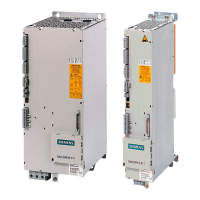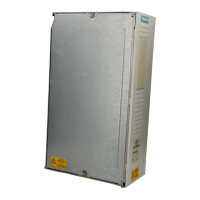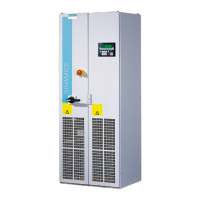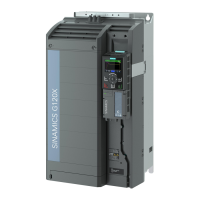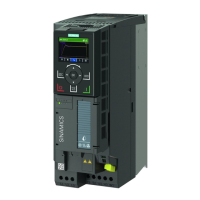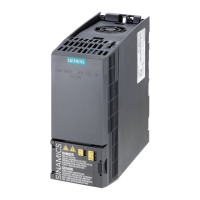9
05.01
9.6 Application examples with SIMODRIVE 611
9-246
Siemens AG 2001 All rights reserved
SIMODRIVE 611 Planning Guide (PJU) – 05.01 Edition
The control categories of the other circuits =7 to =10 must be evaluated by the
user. This depends on how the third–party components/monitoring devices,
which he selected, are used integrated in the basic controls in a safety–related
fashion.
Note
For machines, which are to be classified in a lower Category, e.g. 1 or 2 acc. to
EN 954–1, after a hazard analysis/risk assessment or type C standard, the
control can essentially be derived from these circuit examples and implemen-
ted in a somewhat simpler, single–channel system structure!
This also applies to sub–areas/sub–functions of a machine, which can be imple-
mented, e.g. according to type C standards also with a lower or also higher con-
trol category, deviating from the basic machine. For instance, after hazard ana-
lysis/risk assessment, it may also be necessary that a hydraulic/pneumatic
clamping device in the working zone must be controlled using a two–hand con-
trol device in compliance with Category 4.
S Circuit examples =4 to =10
The two channel system structure in the application example is achieved:
First shutdown path: The energy to the drive motors is disconnected via the
start inhibit functions in the drive modules.
Shutdown is realized via terminal 663. The positively–driven checkback si-
gnal contact of the start inhibit relay via terminals AS1–AS2 intervenes in the
EMERGENCY STOP circuit of the safety device. This is cyclically monitored.
Refer to Section 9.5 for a detailed description of the start inhibit.
Second shutdown path: The line contactor in the NE module electrically di-
sconnects the DC link of the drive modules from the supply.
Shutdown is realized via terminal 48 and at the same time, the contactor coil
is opened, in a safety–related fashion using terminals NS1– NS2.
The drive is shutdown, e.g. when stopping in an emergency, as a result of
fault messages/signals from the drive system or the start inhibit monitoring
when a fault condition develops.
The positively–driven NC contacts 111 – 213 of the line contactor is monito-
red after each switch–off cycle in the feedback circuit of the EMERGENCY
STOP safety device. Refer to Section 9.2.4 for a detailed description of the
line contactor.
For an EMERGENCY STOP, the drives are stopped in Stop Category 1 ac-
cording to EN 60204–1; 9.2.2: “Controlled stopping”, the energy feed is only
interrupted when the drive has come to a standstill.
The circuit examples =2 and =3, included in Section 9.7 can be used for
basic and medium complexity applications.
Functions
9 Important Circuit Information
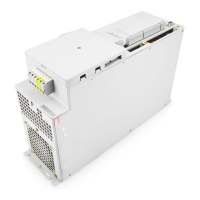
